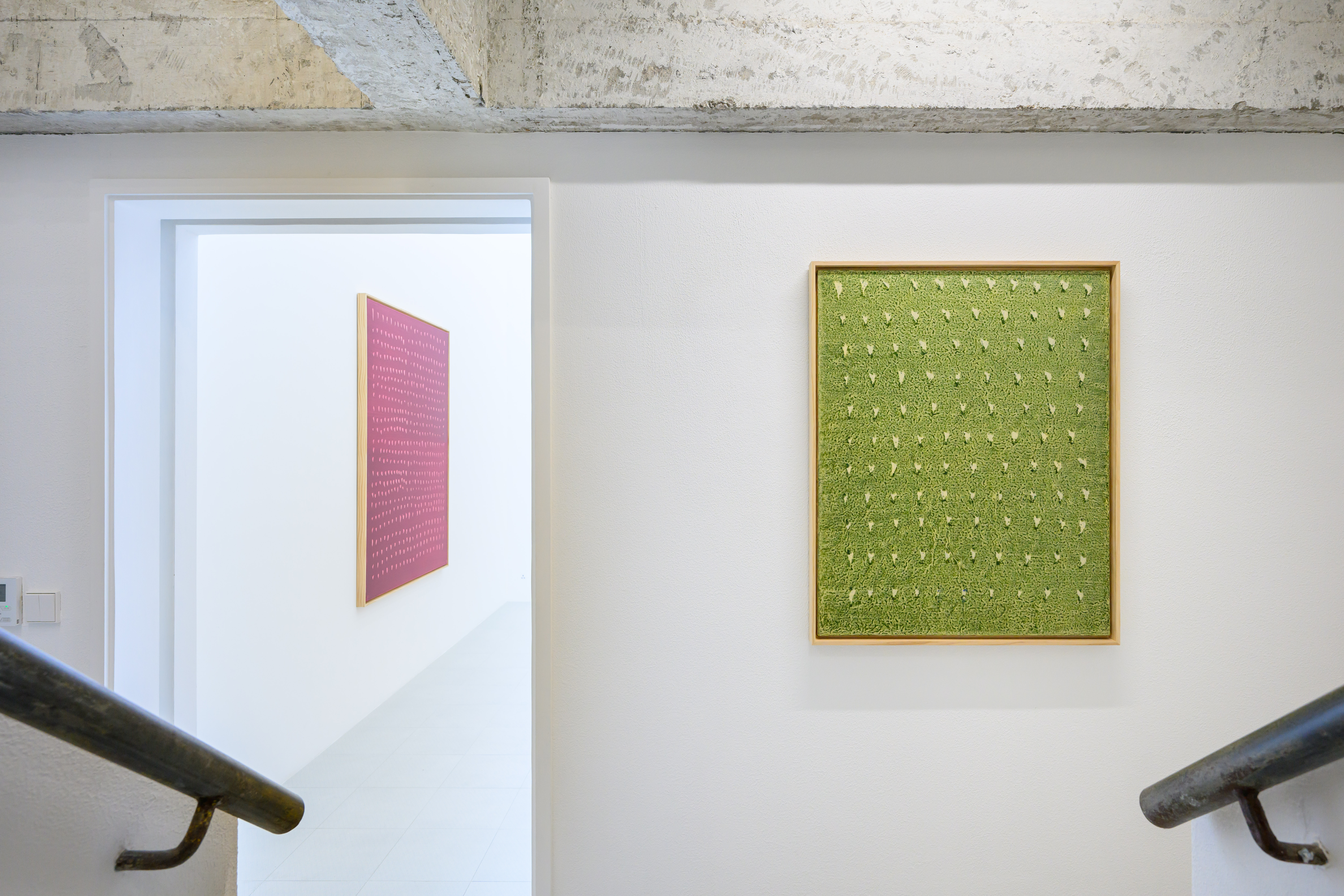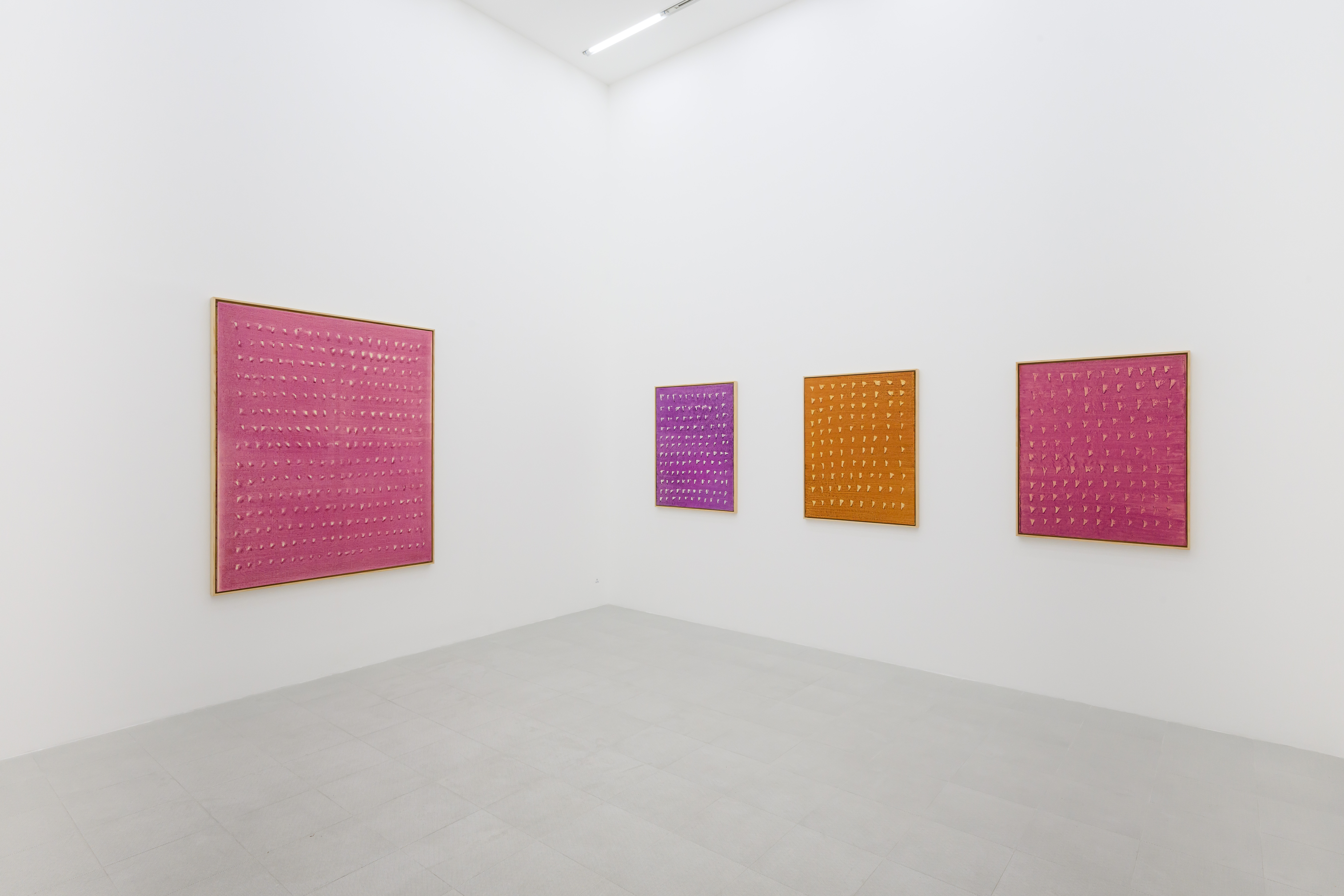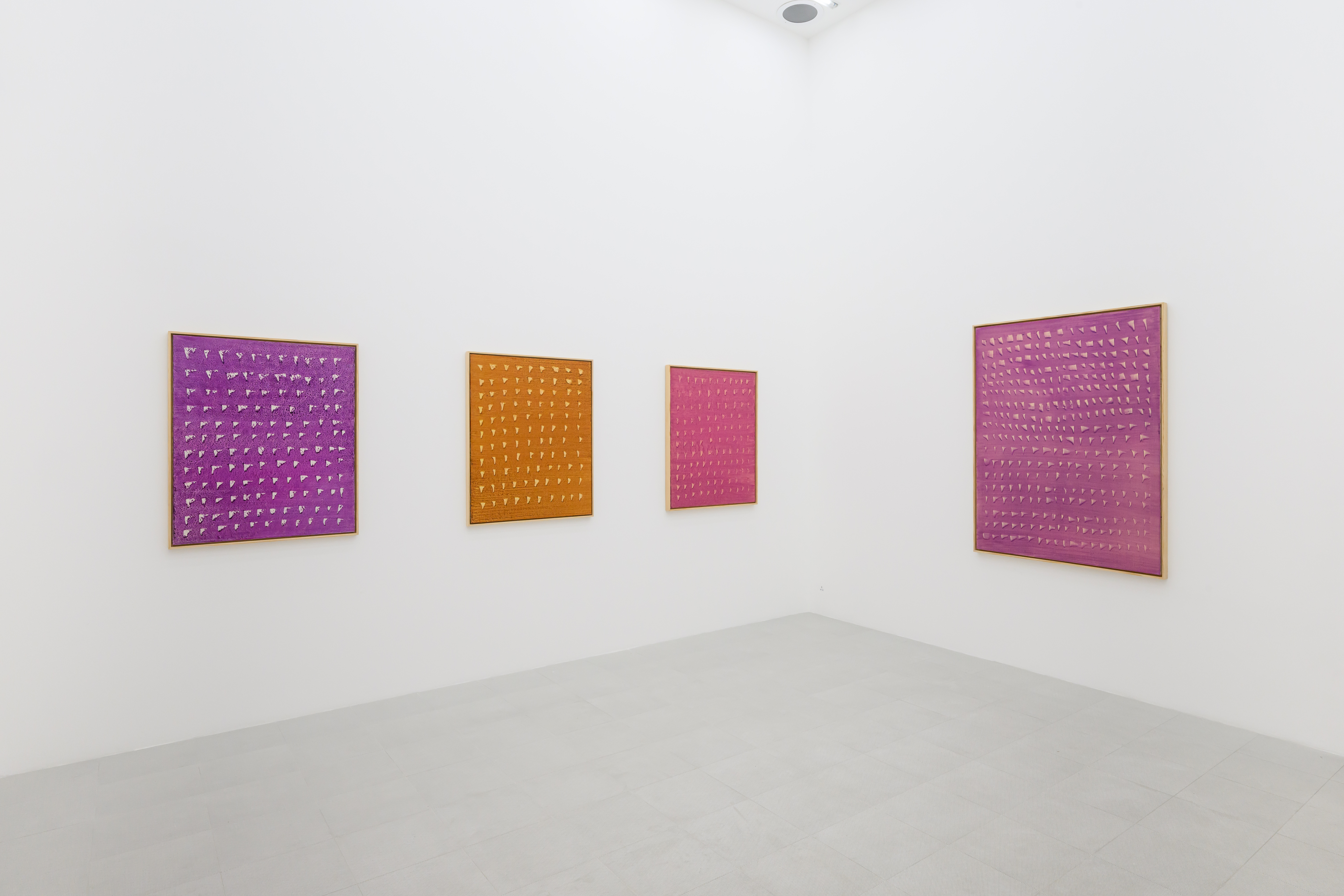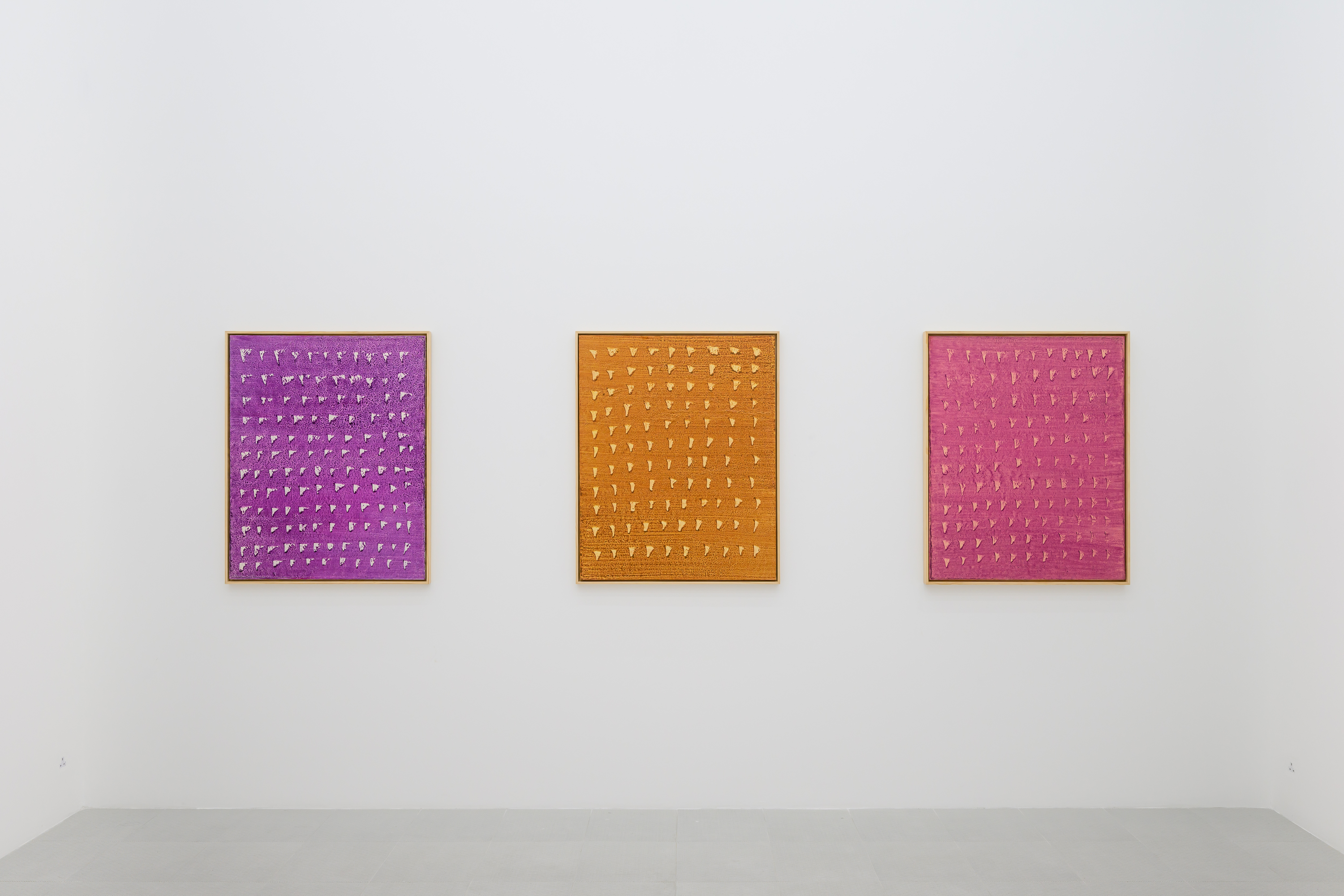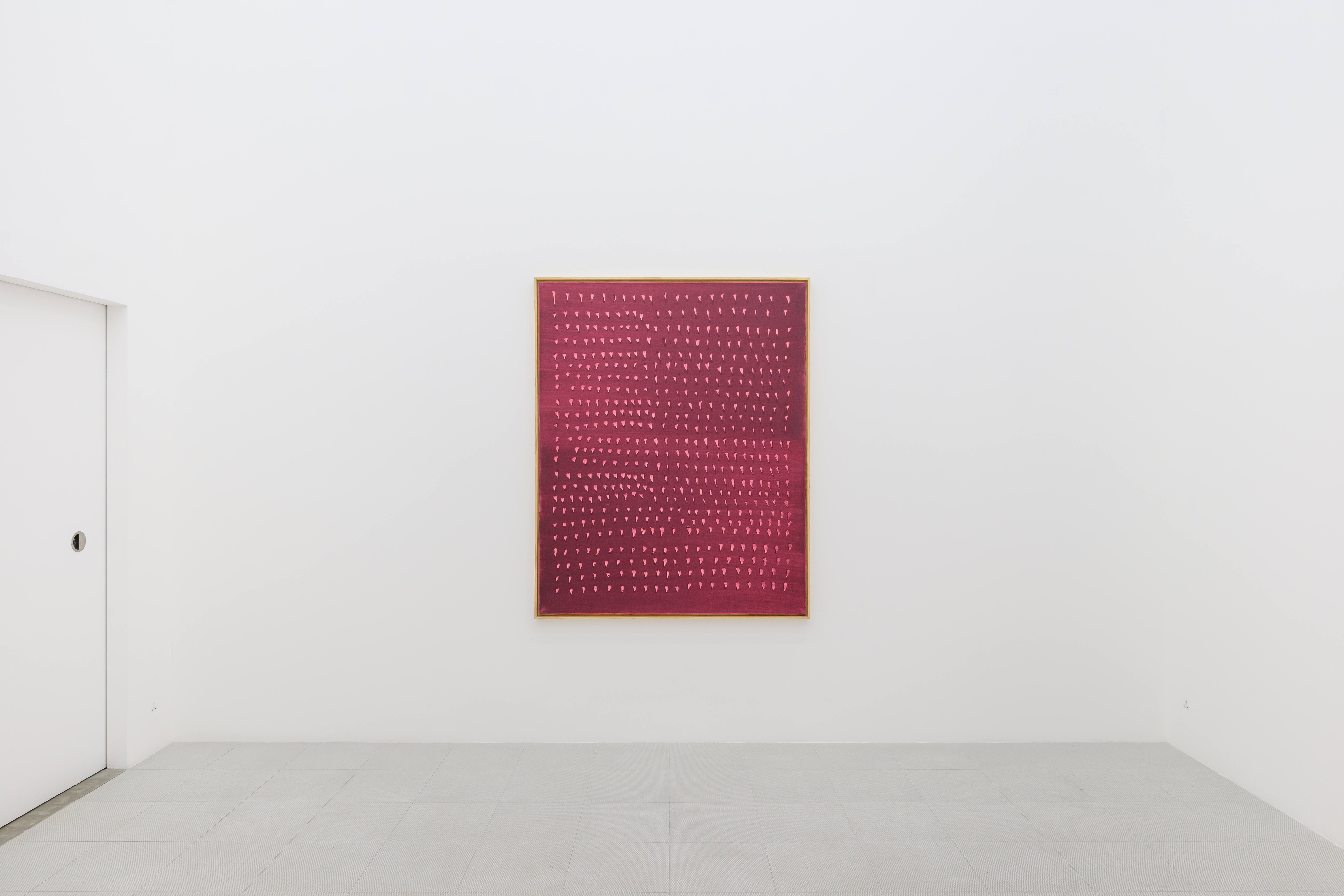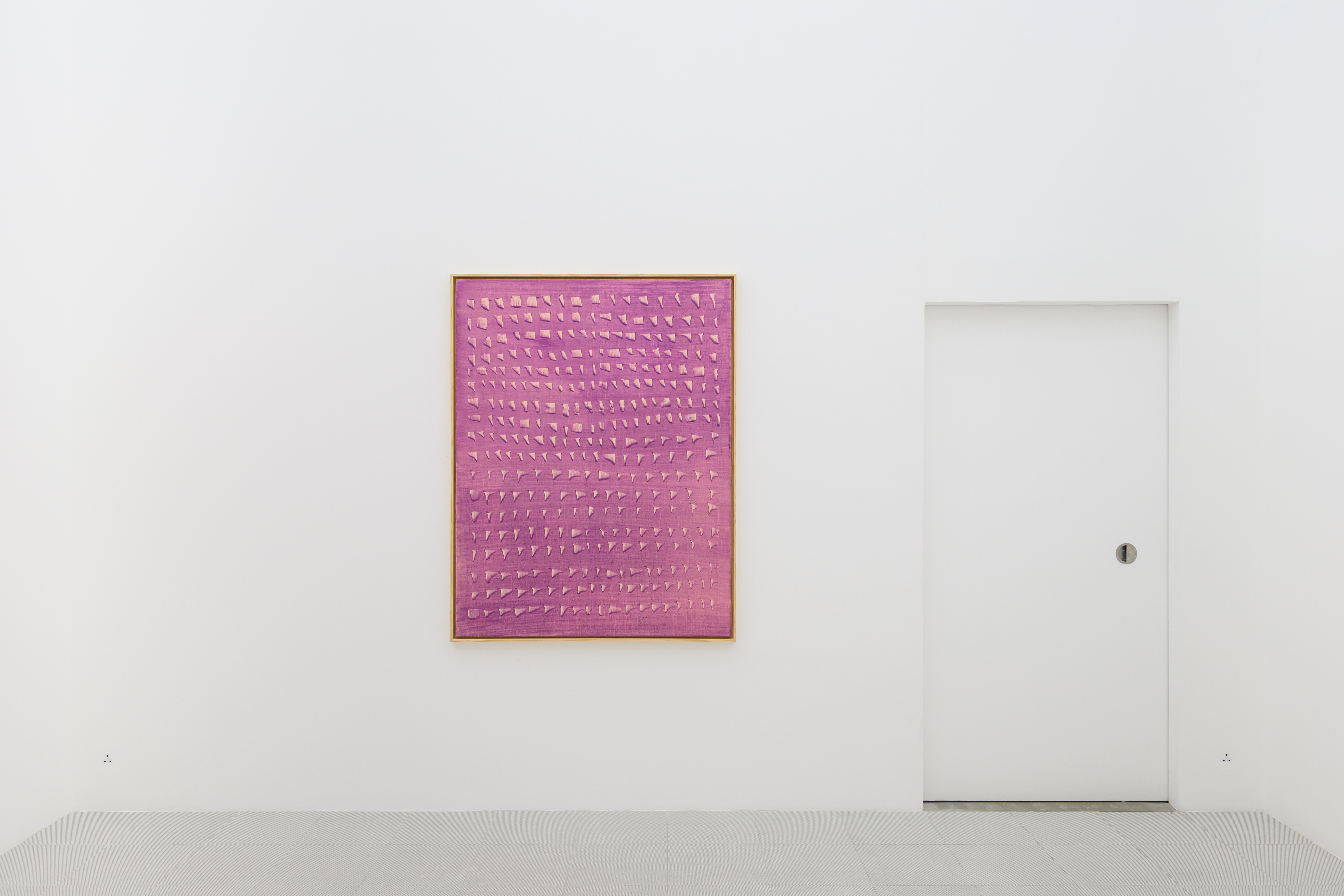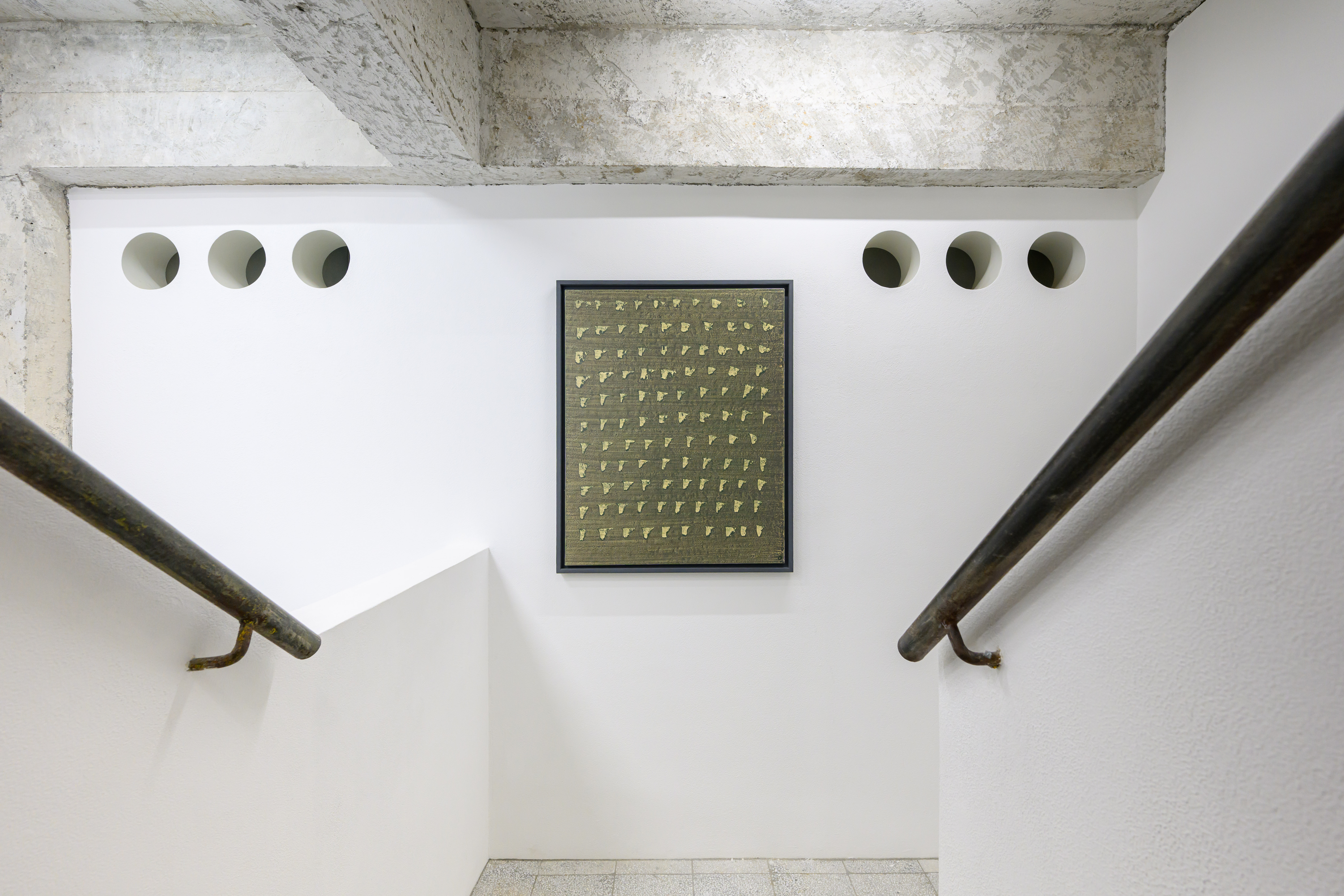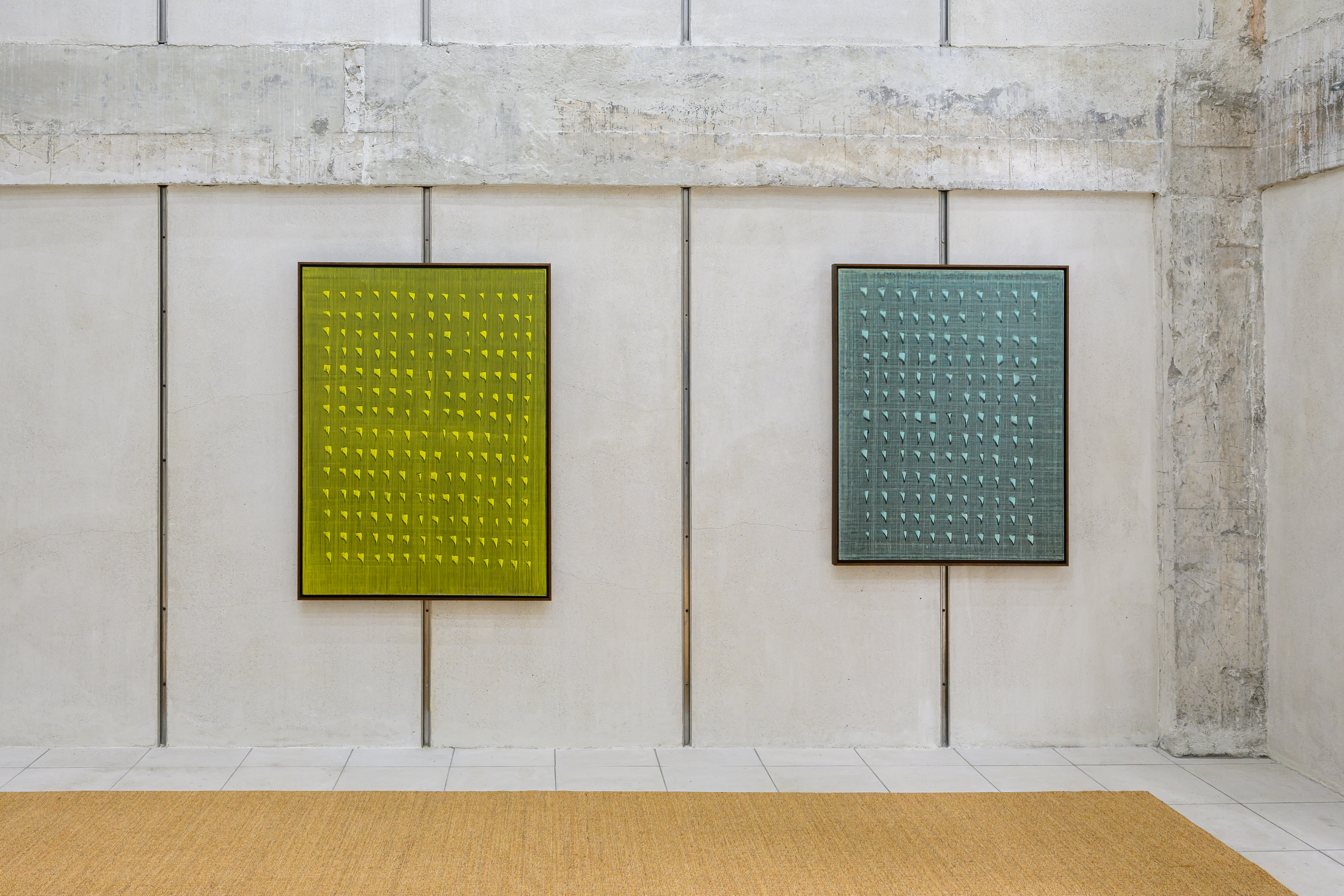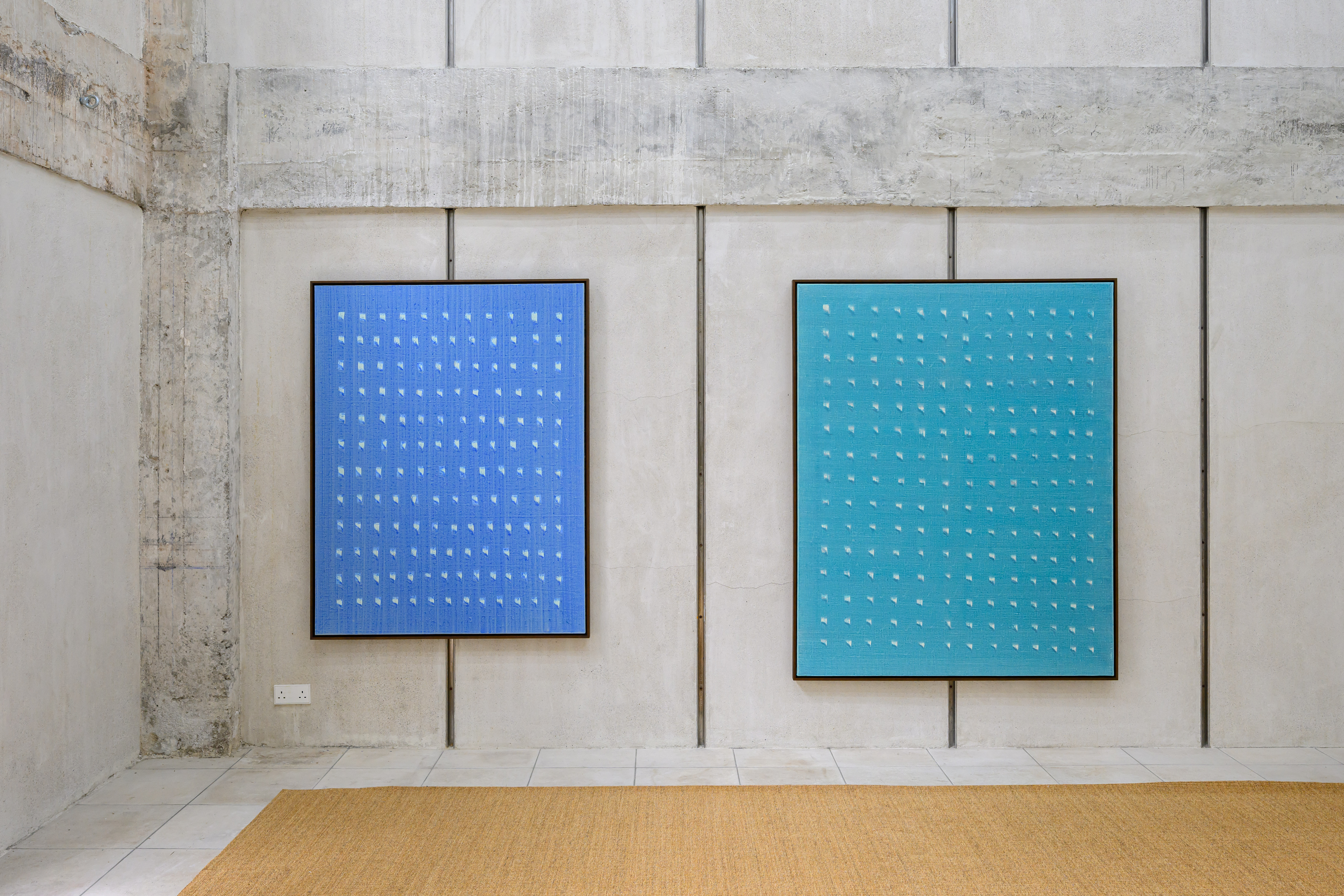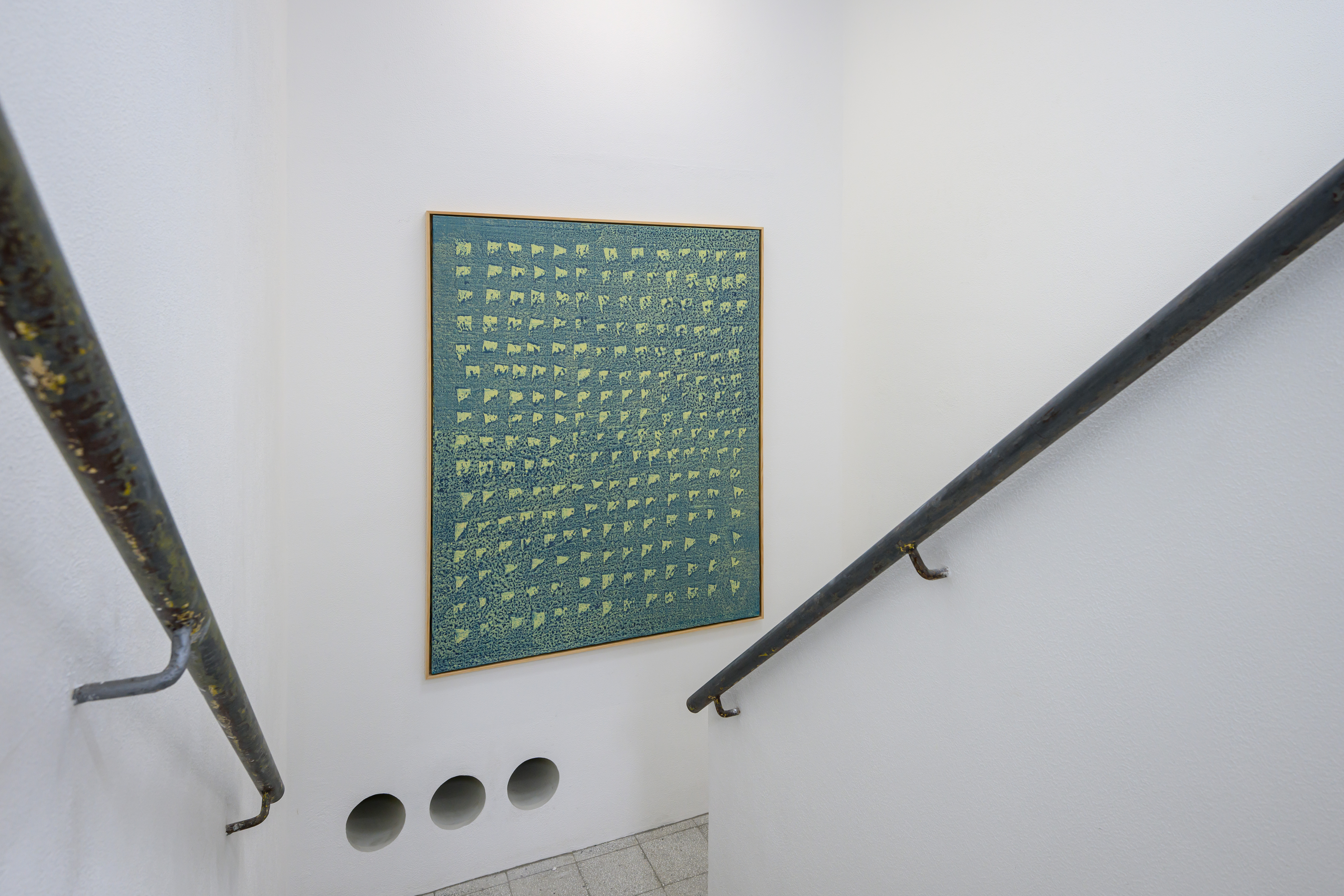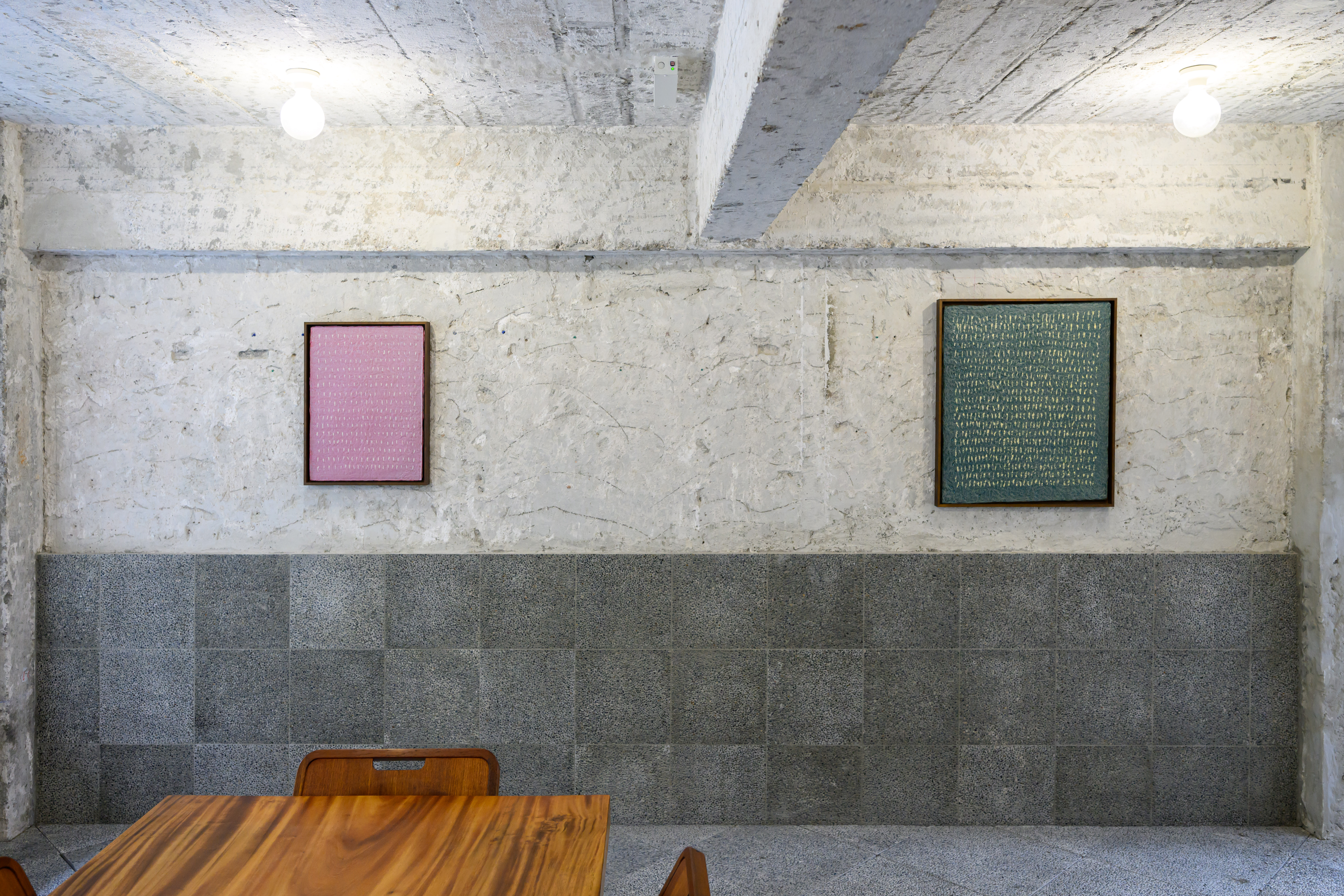Kiang Malingue is pleased to present an exhibition of the late Cho Yong-Ik’s (1934-2023) abstract paintings created in the last five years. Recognised as a leading figure in Korean abstract painting, Cho produced a series of vibrant paintings after his exhibition at Edouard Malingue Gallery, Hong Kong in 2016, continuing to explore the haptic and spiritual dimensions of art, concluding a remarkable, ever-deepening oeuvre that first made its international appearance in the 1960s.
For the new body of work, Cho applied signature painting methods such as scratching — gently peeling off the top layer of paint with his thumb, a dry brush or a knife to reveal the alter undertone — freely oscillating between the celebrated “Wave” and “Bamboo” series to reexamine structural and semantic associations between the independent series. While the painting processes and the matrix-making marks were just as rigorous and porous as earlier series, the palette became increasingly lively and robust: in his eighties, Cho made extensive use of unprecedentedly saturated indigo, aquamarine, crimson, turquoise and olive alike, measuring the different ways in which the dashing, permeable white marks — constant yet always unique — take form against a highly contrasting surface.
The larger works in the exhibition such as the densely annotated crimson 17-1013 (2017) and the peachy 19-414 (2019) are exemplary of Cho’s practice in this period, leaving organic openings and sinuous curves across the surface. The subtle gradation across the canvases celebrates the meditativeness, vitality and the value of natural forms. Cooler surfaces such as 19-323 (2019) and 17-624 (2022) also testify to the artist’s interest in the dynamic between natural forms and a carefully balanced shapeshifting process: the slightly stretched surfaces of the paintings echo with Cho’s marks, warping an abstract reality that is as enticing as forthcoming.
In 2019-1024 (2019) and other works on Korean paper including 2018-17 (2018) and 2019-19-21 (2022), the individual marks have become notably fractured, viscous and slithery, at once submitting to and remapping the textured veneer of the paper. One of the most recent works, 22-0903 (2022) is particularly calligraphic, passing painting gestures as inscription, revealing the endurance of a singular abstract practice whose narrative pertains to the act of writing itself.
(About Cho Yong-Ik)
Korean artist Cho Yong-Ik’s delicate, process-driven work is composed of systematic marks revealing a dual undertone, rhythmic yet ad hoc strokes, and fine wisps skirting the edges of the page. Rising to prominence in the mid 60s following his studies at Seoul National University, Cho had commenced by creating colourful abstract compositions before he passed into the Dansaekhwa rubric of expression (‘monochrome painting’ in English) in the 70s. Cho differentiated himself from other Dansaekhwa artists by permitting subtle hints of colour to grace his work, while maintaining an emphasis on natural, energetic materiality. He had held exhibitions across Korea and internationally, as well as at various Biennales, including Paris (1961, 1969) and Sao Paulo (1967) among other locations. Cho’s work has additionally been exhibited in various Biennales, including Paris (1961, 1969), Sao Paulo (1967) and is held in multiple permanent collections, including M+, Hong Kong, MMCA, Korea, Seoul Art Museum, Leeum Museum of Art, Korea and Gwangju Museum of Art, Korea.
Cho Yong-Ik: Late Works Cho Yong-Ik
